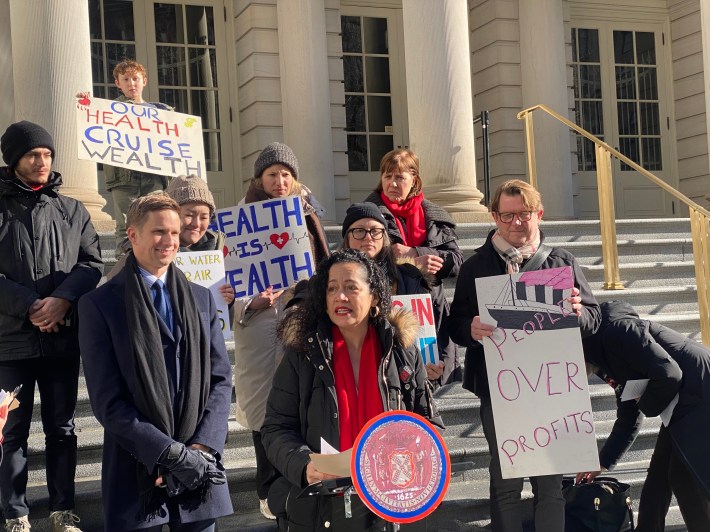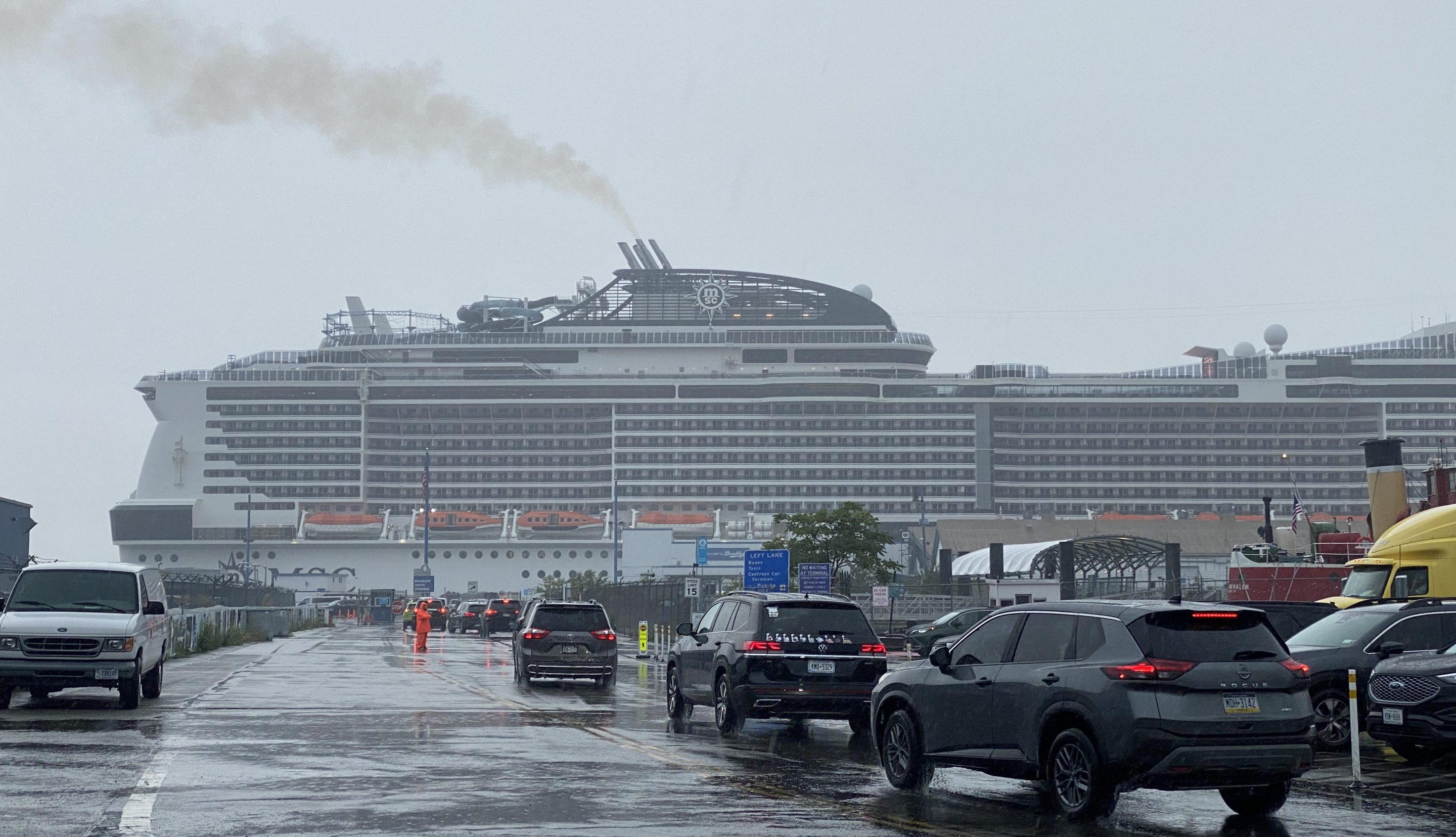The city has sunk $350,000 into fixing the traffic mess caused by the arrival of massive cruise ships in Red Hook, but the big vessels continue to ensnare the coastal Brooklyn enclave in gridlock, residents and pols charged on Thursday.
Skyscraper-sized ships like the MSC Meraviglia have dumped thousands of passengers and crew into the neighborhood on a regular basis for almost the past year, and a local pol slammed the city for barely playing catch up.
“How none of this was considered with a ship with 5,000 individuals and 2,500 staff employees to service the ship is mystifying to me, quite frankly,” said Red Hook Council Member Alexa Avilés during a Council oversight hearing.
The Meraviglia arrived at Brooklyn Cruise Terminal last April with a promise by Mayor Adams that it would be a “real boost to our economy, a boost to tourism, and a boost to contributing to our local communities."
Instead, the 19-deck “mega-ship” that’s nearly as long as the Chrysler Building is tall draws as many as 600 vehicles an hour to Red Hook in order to transport its passengers, according to a study consultants at WSP prepared for EDC over the summer, bringing the streets like the main drag Van Brunt Street to a standstill.
EDC also deployed 13 traffic agents to supplement NYPD cops and increased service on its NYC Ferry transit system, but Avilés criticized the city corporation for bailing out the chaos wrought by the luxury liners.
“There are still many issues that remain,” the pol said. “I would like to know how much NYPD resources were utilized to subsidize the cruise industry — I’m not sure this is a good use of taxpayer dollars.”
The city plans to spend more money “until we get it right,” said Andrew Genn, a senior vice president for ports and transportation at EDC. That includes figuring out where cruise passengers are coming from or going so the city can organize more efficient transportation than individual cabs.
“We can ... use shuttle buses, use mass transit to the largest extent possible so that there are fewer vehicles coming into Red Hook,” Genn told the Council’s Economic Development Committee.
The ships also spew toxic fumes into the air because they fail to connect to shore power that the city installed for millions of dollars in Red Hook back in 2017.
EDC subsidizes cruises to make up the extra cost of plugging into shore power versus running on their own polluting engines, but even those that have the capability still ditch the chargers 30 percent of the time, due to bad weather or Con Edison's grid not being able to handle the extra load, officials said. (The Meraviglia doesn't connect to shore power because its connector is too far out of reach to hook up with the current system. To repeat that: the plug is too far away.)
Avilés introduced a bill last year that would require ships to hook up to the grid and for cruise liners to work out a traffic mitigation plan, but EDC has argued that it can make the seafaring companies better neighbors through its long-term agreements covering 15 years — even though the city corporation plans to continue to allowing the polluting vessels until 2035.

Ports out west have for more than a decade implemented shore power requirements.
Cruise liners that have been in Brooklyn longer, like the Queen Mary 2, have been using shuttle buses to at least cause less stress on the street grid.
The cruise-induced carpocalypse comes on top of the barrage of trucks and vans servicing last-mile warehouses of companies like Amazon and UPS, which has raised the share of delivery vehicles to one-fifth of the neighborhood’s traffic, Department of Transportation data show.
When EDC began leasing the local piers 11 and 12 from the Port Authority in the early 2000s to build the cruise terminal, the agency specifically designed it to keep traffic off of Van Brunt Street, Genn said, but the arrival of larger ships has changed the game.
Local business leaders say very few of the nautical tourists actually stop to shop or dine in Red Hook, and that the traffic mess has actually decreased sales. The area’s only transit is the MTA bus and the NYC Ferry.
“[The Meraviglia] brought hours of gridlock resulting in bus rerouting, ambulances on the sidewalk, unsafe walking and biking conditions. These conditions repeat every time this boat docks,” said Susan Povich, who chairs the Red Hook Business Alliance and owns the Red Hook Lobster Pound.

Red Hook businesses make 80 percent of their revenue during the warm months from May through September, when locals and visitors flock to the waterfront neighborhood on day trips, according to Povich.
That overlaps with peak cruise season, and the traffic jams have repeatedly caused her staff to struggle to get to work on time at the seafood haven, while last year less than a dozen passengers patronized her eatery that's just steps from the port.
“The traffic congestion this past year during the peak month resulted in retail business declines across the entire neighborhood,” Povich said at a rally outside City Hall ahead of the hearing.
EDC projects more than $400 million in revenue will be generated over a decade-and-a-half through recent agreements with three cruise liners, MSC, Carnival, and Norwegian.
However, of the $40 million in gross revenue last year, only about a quarter was left after accounting for costs like paying contractor Ports America to manage the terminals, EDC officials told the Council.






